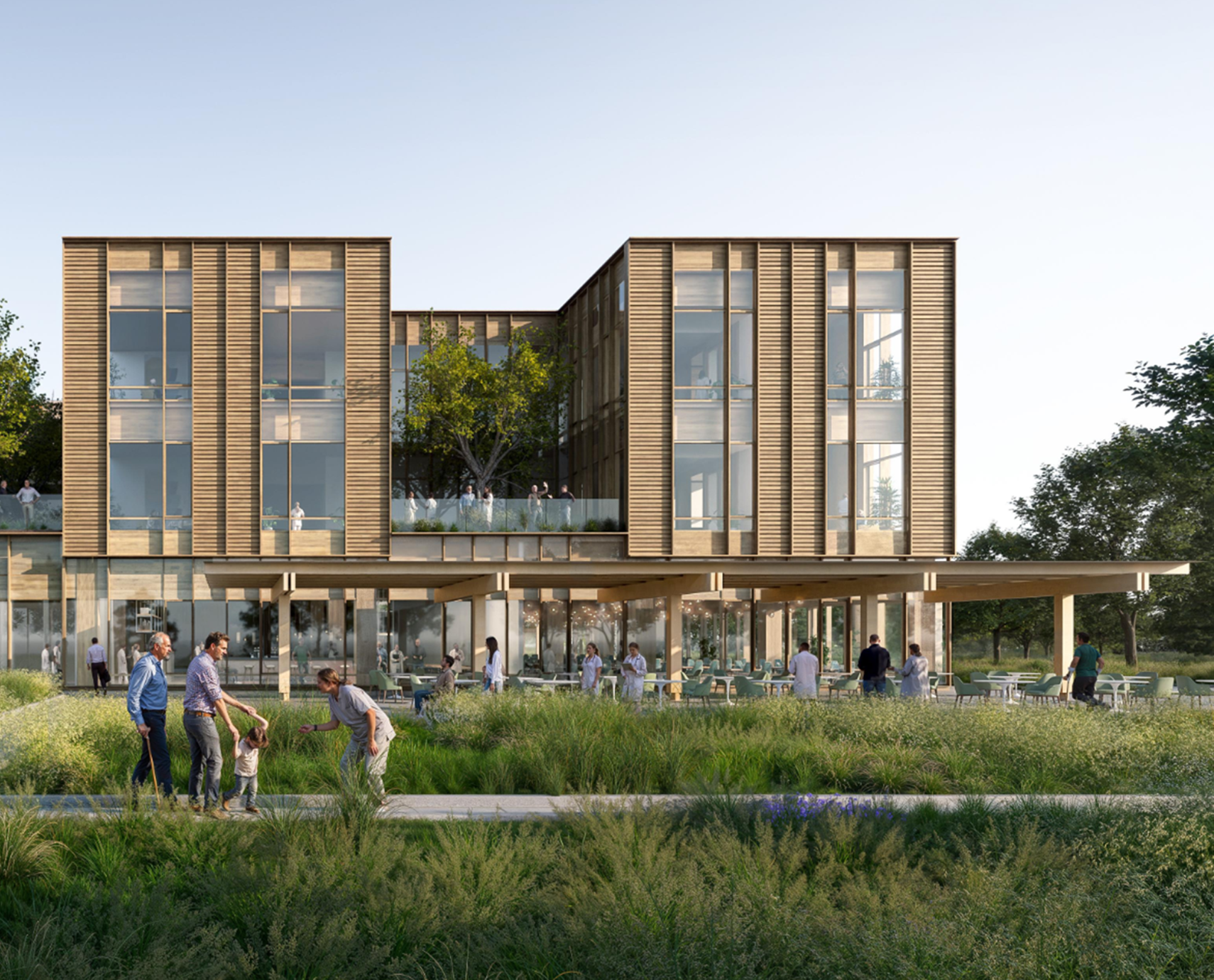
Anne Monnier PE, SE
Principal
Katie M. Ritenour PE, SE, LEED AP
Associate
Christopher Pitt PE, SE, LEED AP
Associate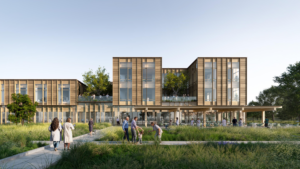
Courtesy of ZGF
Though mass timber is consistently used as a design material for large-scale buildings such as offices, laboratories, and airports, it remains underutilized in the construction of healthcare facilities.
KPFF teamed up with ZGF and Swinerton in partnership with Timberlab, Degenkolb, Arup, University of Oregon Institute for Health in the Built Environment, PeaceHealth, Jensen Hughes, and Pierce McVey to perform an in-depth analysis on the potential use of mass timber in healthcare facilities. The comprehensive study sought solutions for adopting mass timber as a safe, efficient, and sustainable construction material in the healthcare sector.
The findings, published in “Mass Timber Hospitals: The Future of Healthcare,” clarify common misconceptions in hospital design such as hygiene control, lateral loads, acoustics, gravity systems, and framing.
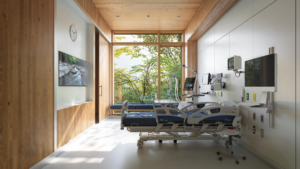
Courtesy of ZGF
How healthcare facilities benefit from the use of mass timber:
Aesthetics & Hygiene: Not only is mass timber naturally hostile to microbes, but common wood-coating practices make it as easy to clean as traditional materials like steel and concrete. In addition, studies consistently show how indoor spaces that mimic natural environments contribute to an overall reduction in user stress—of special importance for healthcare settings with emergency rooms and 24-hour care.
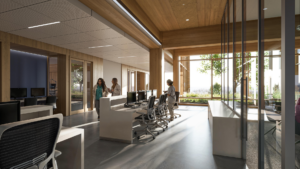
Courtesy of ZGF
Sourcing: Sustainably-sourced timber benefits communities, forests, and rural or less represented parts of the timber supply chain. Prioritizing Climate Smart Forestry supports the proliferation of forests where more trees are grown than harvested. The timber’s journey from forest to built structure creates a unique opportunity for story that enhances a building’s community impact.
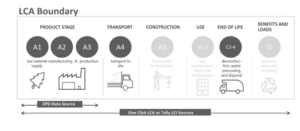
Cost Efficiency: The use of mass timber offsets overall cost at numerous stages of the design and construction processes. Assembly is faster, and interior finishes and foundation materials are less necessary for an aesthetically pleasing and efficient design.

Lower Carbon Footprint: A Life Cycle Analysis of a building’s full material lifespan shows that mass timber can reduce carbon emissions by 57% compared to steel structures. This lower carbon footprint is partially due to timber acting as a “carbon sink.” While manufacturing of materials like concrete typically releases excess C02 into the atmosphere, wood naturally stores atmospheric carbon before harvesting and, with proper care, continues to store carbon within the built environment, resulting in a lower overall carbon footprint per square foot.
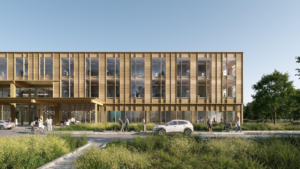
Courtesy of ZGF
In addition to mapping the ways healthcare facilities benefit from mass timber design, the research study offers a deep dive into how each of the following elements can be adapted to meet the specific codes and requirements of hospital design:
- Fire Protection & Code Compliance
- Spans & Structural Grid
- Gravity System & Framing
- Vibration
- Lateral Loads & Systems
- MEPT Integration
- Acoustics & Sound Isolation
- Infection Control & Cleaning
- Natural Ventilation & Daylight
- Cladding & Enclosure
- Embodied Carbon Analysis
- Supply Chain & Wood Sourcing
- Pre-fabrication & Modularity
- Cost & Schedule
- Insurance & Operations
As the need for carbon-efficient construction grows in the healthcare sector, KPFF continues exploring innovative mass timber design methods to help shape the future of healthcare facilities. For more information, you can download the complete research study report from the ZGF website at https://www.zgf.com/ideas/7295-mass-timber-hospital-the-future-of-healthcare.
Mass Timber Hospital: The Future of Healthcare” is a collaboration with ZGF Architects, Swinerton Builders, Timberlab, Degenkolb, Arup, University of Oregon Institute for Health in the Built Environment, PeaceHealth, KPFF, Jensen Hughes, and Pierce McVey.
